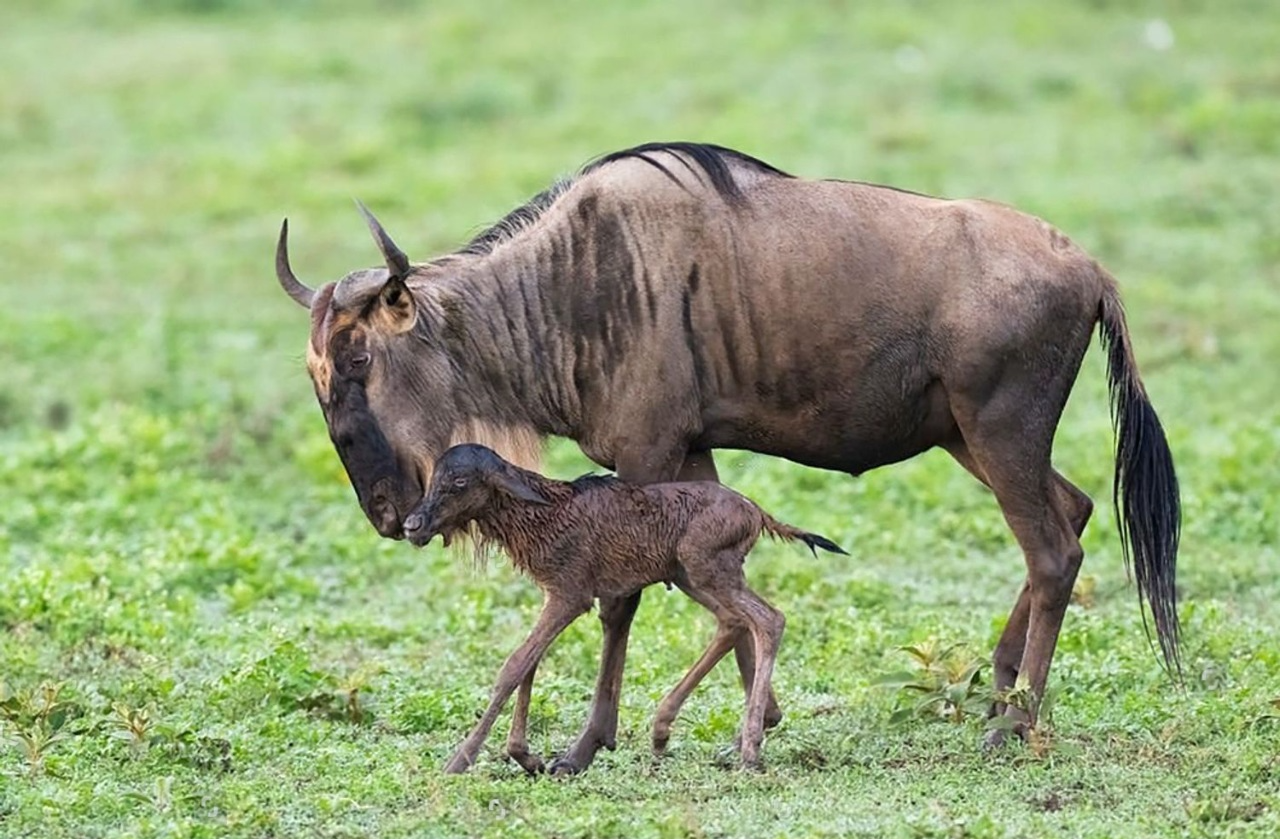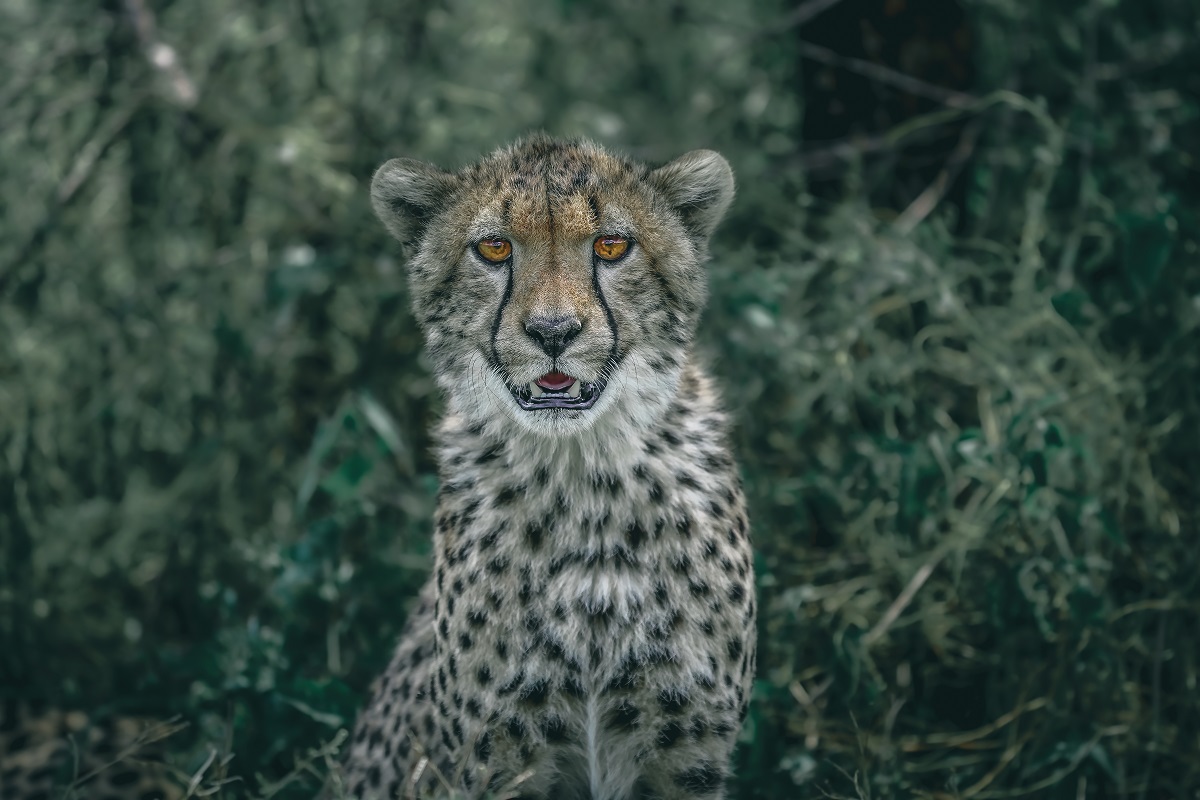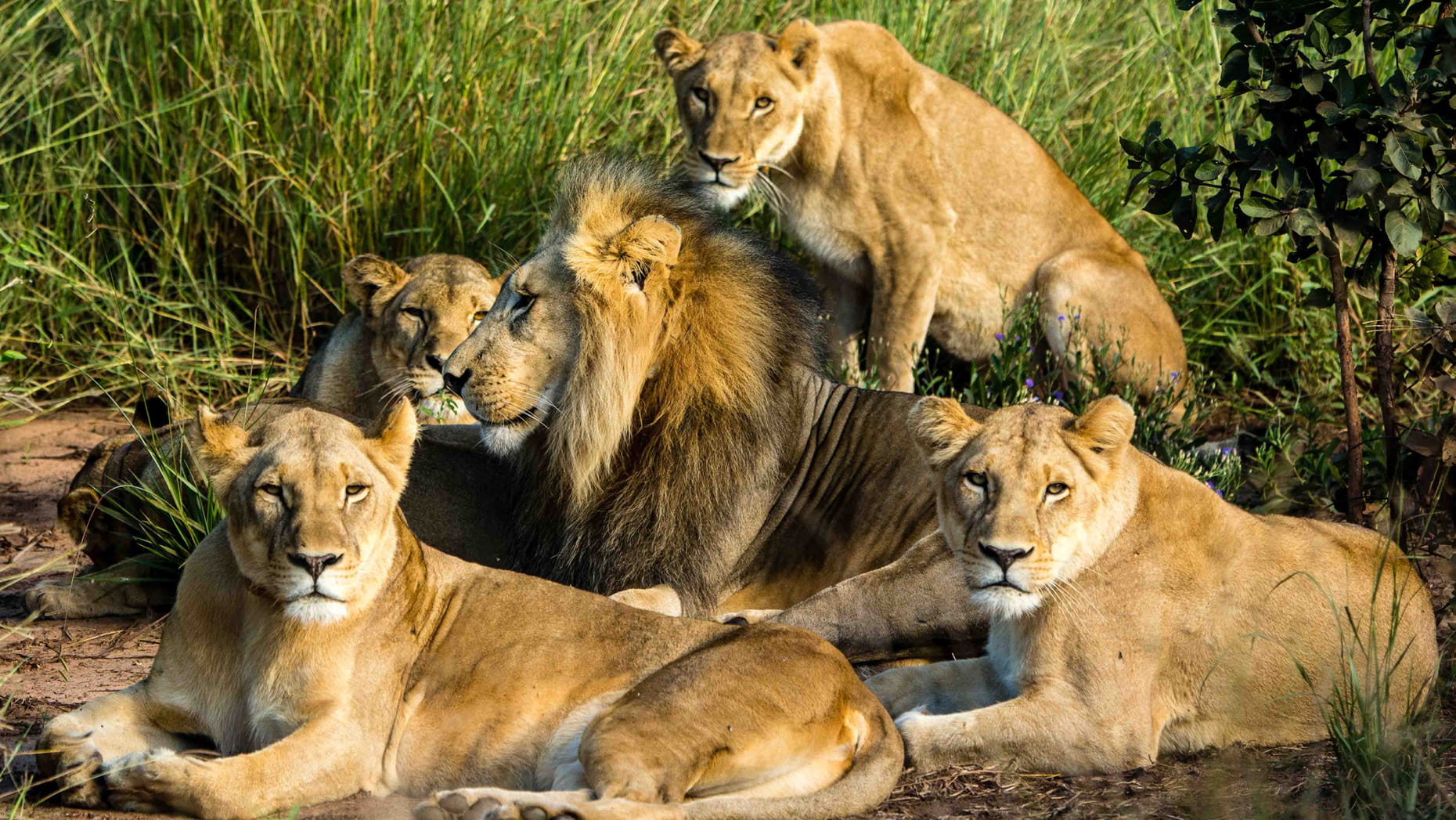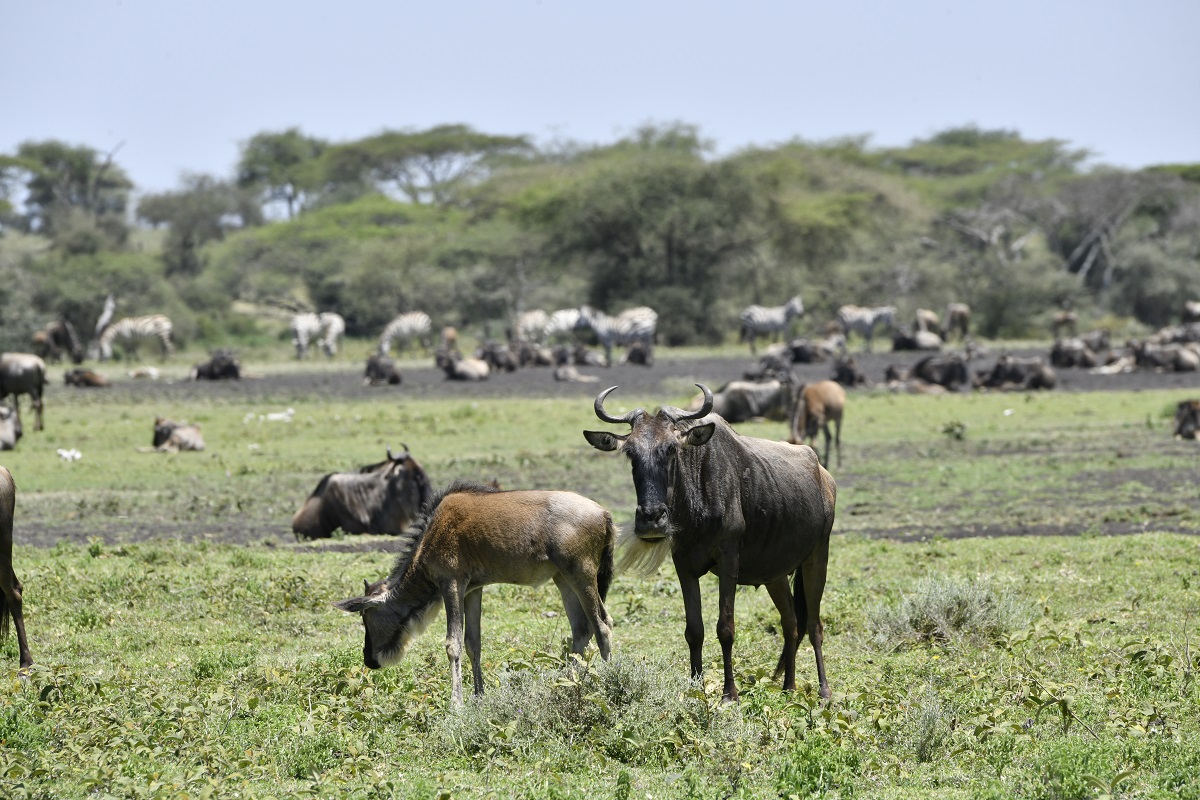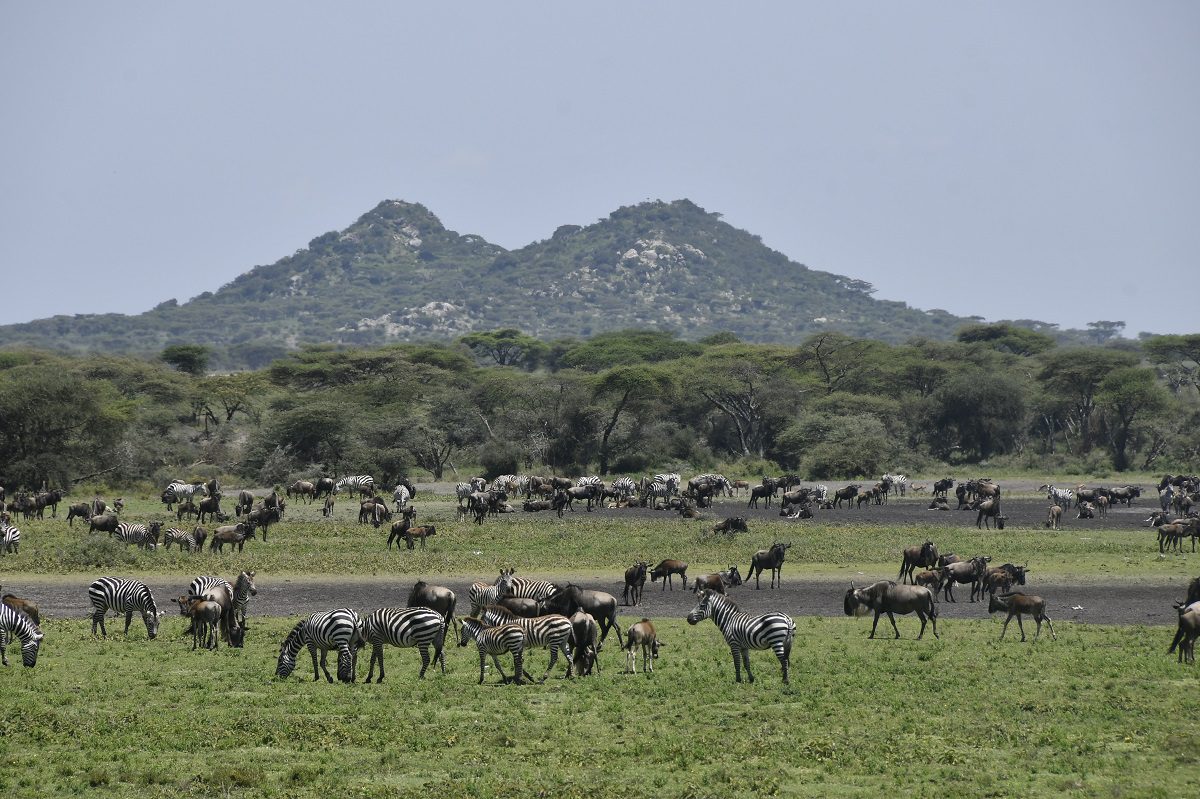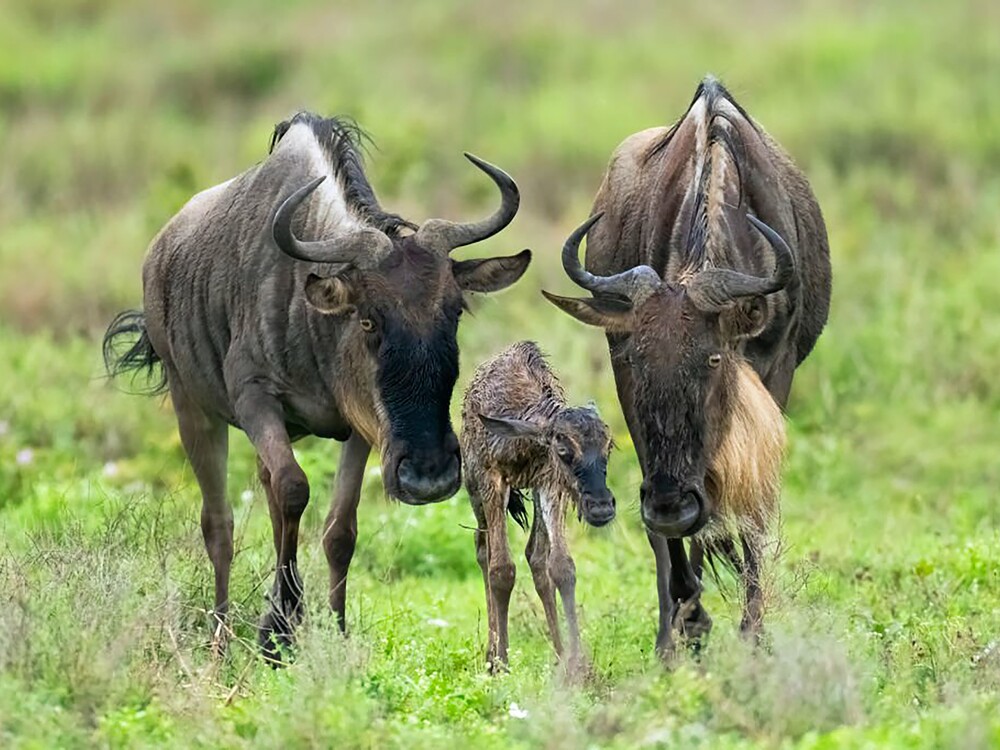Tanzania Weather in February for Safaris: A Complete Guide
Tanzania Weather in February
Tanzania is one of Africa’s top safari destinations. With its wide savannahs, incredible wildlife, and famous national parks, it offers adventures all year round. But what is the weather like in Tanzania in February? Is February a good time for safaris? In this guide, we will explore the weather in Tanzania in February, highlight the best destinations to visit, discuss the wildbeest migration in February, and help you choose the best safari packages for an unforgettable journey.
Understanding the Weather in Tanzania in February
Tanzania Weather in February is characterized by warm temperatures and moderate humidity, making it a pleasant time for travelers to explore the country. During this month, daytime temperatures typically range from 25°C to 32°C (77°F to 90°F), while nighttime temperatures remain comfortable. February is part of the short dry season, especially in popular destinations like the Serengeti, Ngorongoro Crater, and Zanzibar. Rainfall is generally light and sporadic, primarily in coastal and northern regions, with brief showers that seldom disrupt travel plans. The weather is ideal for wildlife viewing, as animals gather around water sources and game drives are less affected by mud or slippery roads.
Regional Weather Highlights
Northern Circuit (Serengeti, Ngorongoro, Tarangire, Lake Manyara): This region enjoys reliably dry days and cool, comfortable nights. The landscapes are open, making it easier to spot wildlife. The short dry season ensures that grass is not too high and animals are drawn to permanent waterholes, providing excellent game viewing.
Southern Circuit (Ruaha, Nyerere/Selous, Mikumi, Udzungwa Mountains): February in the Southern Circuit marks a gentle transition toward the long rains. While the weather remains warm and sunny, occasional showers can occur, and the scenery turns lusher and greener. This attracts a rich diversity of wildlife to rivers and waterholes—particularly in Ruaha and along the Rufiji River in Nyerere National Park. Road conditions may be a bit muddier or slippery at times, but the parks are less crowded, allowing for more intimate safari experiences. Birdlife is especially abundant now, and visitors to Udzungwa Mountains may catch glimpses of rare primates among the rainforest canopy.
Coastal areas, including Zanzibar: offer excellent conditions for beach relaxation, water sports, and diving. In February, Zanzibar experiences warm, sunny days with temperatures often reaching up to 35°C (95°F), making it ideal for beach adventures, aquatic sports, and even dolphin excursions. Winds tend to ease off toward the end of the month, but kite surfing remains popular earlier on, especially along the northern and eastern shores. The calmer southern beaches provide a more tranquil escape with gentle breezes and warm seas, perfect for snorkeling and coral spotting.
Nearby islands such as Pemba and Mafia also shine in February. Pemba offers a lush tropical atmosphere with an abundance of ripe fruits like mangoes, coconuts, and bananas, while its clear waters are perfect for snorkeling, diving, and peaceful exploration. Mafia Island provides a serene setting away from the crowds, ideal for underwater adventures or simply soaking in the relaxed island pace.
Overall, February presents a favorable climate for both safaris and beach holidays, attracting visitors seeking warm and sunny getaways in Tanzania.
Why Travel to Tanzania in February?
Many travelers wonder why it is worth traveling in February rather than other times of year. There are several great reasons:
1. Ideal Safari Conditions
The dry weather means that grass is shorter and water is scarcer, drawing animals out into the open and around permanent water sources. This makes wildlife easier to spot and photograph. Roads and trails in the national parks are also in good condition, so self-drive safaris and guided tours are both accessible.
2. Best Time to Witness the Wildebeests Migration
Perhaps the most exciting answer to “why travel in February” is the opportunity to see the great wildebeest migration in the southern Serengeti. February is the peak of the calving season, when roughly half a million young wildebeest are born in just a few short weeks. This event attracts predators and makes for astounding wildlife encounters.
3. Fewer Tourists
February sits just outside the peak travel seasons, which are June to October and December holidays. Parks and lodges are less crowded, offering a more peaceful and intimate safari experience. While you may notice a moderate number of visitors—especially those drawn to witness the dramatic wildebeest calving in the Serengeti—the overall atmosphere remains tranquil and far less hectic than during the busiest months. This means you can enjoy prime wildlife sightings and explore popular sites without the crowds, making your safari feel even more exclusive and relaxed.
4. Attractive Rates
With lower demand, many safari packages in February are more affordable. This means you can often find excellent deals on lodges, tours, and flights. In fact, well-known accommodations such as Acacia Central Camp, Melia Ngorongoro, Nyikani Tarangire, and Kilimamoja Lodge frequently offer seasonal discounts, sometimes ranging from 10% to as much as 40% off standard rates. These savings make it possible to enjoy high-quality stays and experiences at a fraction of the cost seen during peak months, letting you stretch your travel budget further while still enjoying all the comforts and wonders of Tanzania.
How to Tailor Your Safari for February
Customizing your Tanzania safari in February is all about matching your interests with the season’s highlights. Start by focusing your itinerary on the Southern Serengeti and Ndutu plains for unbeatable wildebeest calving action and predator encounters. Love birdwatching? Add Tarangire or Lake Manyara, where the February birdlife is in its prime.
If you prefer smaller crowds, opt for lesser-visited gems like Selous (Nyerere National Park) or Ruaha, where lush green landscapes and fewer vehicles create an authentic wilderness experience. Mix and match classic game drives with unique activities like boat safaris on the Rufiji River or walking safaris in Nyerere.
For truly personalized planning:
Combine two or more parks to experience different habitats and wildlife. Choose accommodation styles—from mobile tented camps in Ndutu for front-row migration views, to cozy lodges in the Crater highlands for easy access to Ngorongoro.
Fine-tune your pace based on your travel style—add time for relaxing at camp, or pack in more early morning drives if you want to maximize sightings. A tailored safari ensures you catch the best of February’s magic, with a seamless blend of wildlife, landscapes, and comfort.
Comparing Tanzania’s Northern, Southern, and Western Circuits in February
With Tanzania’s vast array of safari options, choosing where to go in February depends on the kind of adventure you’re seeking. While the Northern Circuit is famous for the wildebeest migration, both the Southern and Western Circuits deliver unique experiences that may be perfect for travelers who want to get off the beaten track. Here’s a quick look at how each region stands out during this time of year:
Northern Circuit
The Northern Circuit—home to Serengeti National Park, Ngorongoro Crater, Lake Manyara, and Tarangire National Park—takes center stage in February thanks to the wildebeest calving season in the southern Serengeti. Game viewing is superb as predators flock to the area following the herds. Roads are generally dry and easy to navigate, and the weather is pleasantly warm with little rain. While this region is the most developed for tourism and offers classic “bucket list” wildlife moments, it’s also the busiest of the circuits, though still less crowded than during peak months.
Southern Circuit
For those seeking quieter safaris and lush, green landscapes, the Southern Circuit—including Ruaha, Nyerere (Selous), Mikumi, and Udzungwa Mountains National Parks—shines in February. This area is transitioning from the short dry season to the start of heavier rains, so expect a mix of sunshine and occasional showers. The parks burst into greenery, attracting elephants, lions, giraffes, and prolific birdlife to the waterholes. Game drives can be a touch more adventurous as some roads become muddy, but travelers are rewarded with solitude and excellent wildlife sightings minus the crowds. Boat safaris on rivers like the Rufiji offer an added dimension not found up north.
Western Circuit
The Western Circuit—highlighted by Gombe Stream, Mahale Mountains, and Katavi National Parks—is a paradise for primate lovers and true safari enthusiasts. February brings warm temperatures, green hillsides, and the chance of rain, but also few visitors. Gombe and Mahale specialize in chimpanzee tracking through rainforest terrain, with hikes that can be challenging but immensely rewarding. Katavi, known for its remoteness, delivers outstanding big game action—think lions, elephants, hippos, and more—in a wild, untamed setting. Keep in mind that reaching these parks is more logistically demanding (often requiring charter flights), and facilities are basic compared to the north.
Key Differences at a Glance:
Wildlife Highlights:
- Northern: Massive herds and predator action (wildebeest calving).
- Southern: Diverse savannah species; birdlife; fewer vehicles.
- Western: World-class chimpanzee tracking; unspoiled wilderness; rare wildlife encounters.
Scenery:
- Northern: Open plains, crater landscapes.
- Southern: Lush bushveld, rivers, miombo woodlands.
- Western: Dense rainforests and rugged lakeshores.
Travel Experience:
- Northern: More infrastructure, classic safari lodges, possibly busier.
- Southern: Quieter parks, adventurous conditions, scenic water-based safaris.
- Western: Most remote, intimate, and exclusive; best for seasoned safari-goers.
Selecting your circuit comes down to personal preference—whether you’re seeking iconic Great Migration scenes, lush landscapes teeming with wildlife and tranquility, or rare primate encounters along forested lakeshores, Tanzania in February delivers.
The Best Safari Packages in February
What to Pack for a February Safari
Packing for a safari in February is straightforward. Here’s a quick checklist:
- Clothing: Lightweight, neutral-colored clothes for cool mornings and warm days; a sweater or jacket for evenings; a sun hat and sunglasses.
- Footwear: Comfortable walking shoes or boots.
- Rain Gear: A light rain jacket for unexpected showers.
- Other Essentials: Sunblock, insect repellent, camera gear, binoculars, and personal medications.
- Travel Documents: Valid passport, visa (if required), travel insurance, and proof of yellow fever vaccination (if coming from an endemic area).
Travel Tips for February Safaris in Tanzania
- Book Accommodations Early: February is a great time for the migration, and popular camps near Ndutu fill up quickly.
- Stay Flexible: While the weather is mostly dry, occasional showers can happen. Stay open to rescheduling a game drive if needed.
- Health Precautions: Bring necessary medications, and consult your doctor about malaria prophylaxis.
- Local Guides: Choose safaris with experienced guides—they know the best spots to find wildlife and will enrich your experience with local insights.
February: A Birdwatcher’s Paradise
Is February a good month for birdwatching in Tanzania, and what bird species might be seen? Absolutely—February is a superb time for keen and casual birders alike. The country welcomes a vibrant influx of migratory birds from Europe, Asia, and beyond, joining Tanzania’s already impressive resident birdlife.
Lake Manyara National Park especially transforms into a haven for birdwatchers, with its flourishing greenery and thriving wetlands attracting thousands of birds. Flocks of flamingos create pink carpets along the lake shore, while pelicans, storks, herons, and kingfishers are easily spotted throughout the park. Other highlights include the colorful Fischer’s lovebird, lilac-breasted roller, and a variety of raptors.
Whether you’re in the northern parks like Tarangire and Serengeti or venturing to Selous (Nyerere National Park) in the south, February puts on a dazzling display—over 1,000 bird species can be seen across Tanzania. Don’t forget your binoculars; you’ll want them handy with so much on the wing!
Best Places to Visit in Tanzania in February
Tanzania stands out as a premier African safari destination throughout the year, but February brings unique opportunities to witness wildlife spectacles and enjoy excellent weather across the country. From the calving season in the Southern Serengeti to bird watching in Ruaha, here’s why you should consider these top locations in Tanzania for your February adventure:
1. Ndutu Area – Southern Serengeti (Calving Season)
February is the peak of the wildebeest calving season in the Ndutu area of the Southern Serengeti and Northern Ngorongoro Conservation Area. Around 8,000 baby wildebeest are born each day, attracting predators like lions, cheetahs, and hyenas. The short grasses make for easy viewing and exceptional photographic opportunities. This is one of the Serengeti’s most thrilling months for game drives, with high action and abundant scenes of new life.
2. Serengeti National Park
Beyond the calving drama in the south, the central and eastern Serengeti continue to offer classic safari experiences. February’s weather is warm, the landscape is lush and green after recent rains, and the wildlife is plentiful. The herds are concentrated, making for easier viewing and thrilling predator activity. Birding is also superb at this time.
3. Ngorongoro Crater
The Ngorongoro Crater, a UNESCO World Heritage Site, is stunning in February. The crater floor bursts with greenery, supporting large populations of resident wildlife, including the famed Big Five. Flamingos can be seen on Lake Magadi, while February’s clear skies offer remarkable views into the extinct volcano. Game viewing is fantastic and less crowded compared to the high season.
4. Tarangire National Park
Tarangire’s landscape transforms in February, with lush vegetation after the short rains. Although the massive elephant concentrations seen in the dry season are more dispersed, birding is at its best, with over 500 species recorded. The park is quieter than other destinations, ideal for travelers seeking intimacy with nature and iconic baobab-dotted scenery.
5. Ruaha National Park
Ruaha is Tanzania’s largest national park and remains wild and remote. February is considered “green season,” when the park is particularly picturesque. Wildlife disperses but birdlife is exceptional, with many migrants present and colorful breeding plumage on full display. This is a great month for photographers and those seeking a truly tranquil safari far from the crowds.
6. Nyerere National Park (Selous Game Reserve)
Nyerere, Africa’s largest protected wildlife area, is lush and thriving in February. While some areas may be inaccessible due to rains, the main game-viewing circuits operate well, with boat safaris on the Rufiji River offering unique opportunities to spot hippo, crocodile, and abundant water birds. Walking safaris are also a great way to experience the park’s wilderness during this month.
7. Mikumi National Park
Mikumi is often overlooked but shines in February, especially for those seeking a shorter safari from Dar es Salaam. The park is green and alive, with regular sightings of lion, buffalo, zebra, giraffe, and elephants. Birdlife is rich, and the landscape’s rolling golden grasslands are beautiful after seasonal rains.

